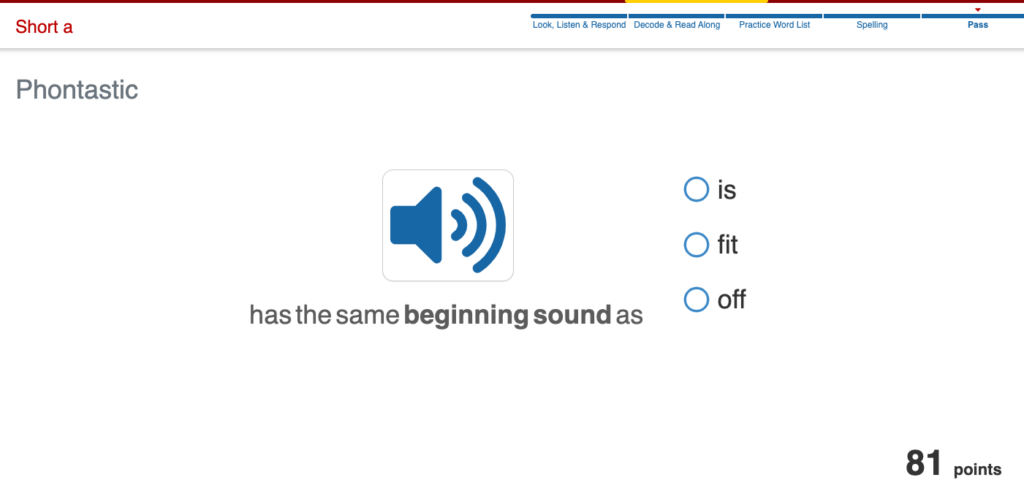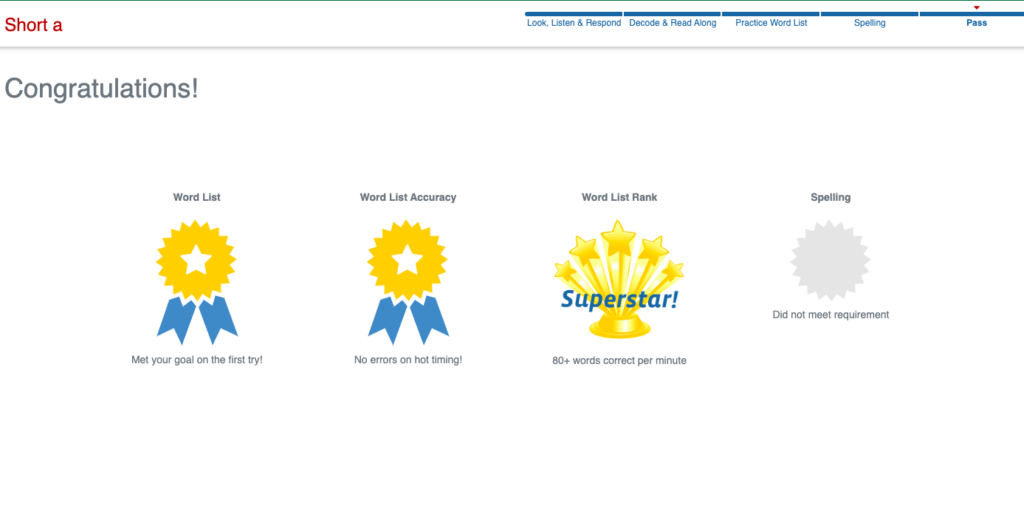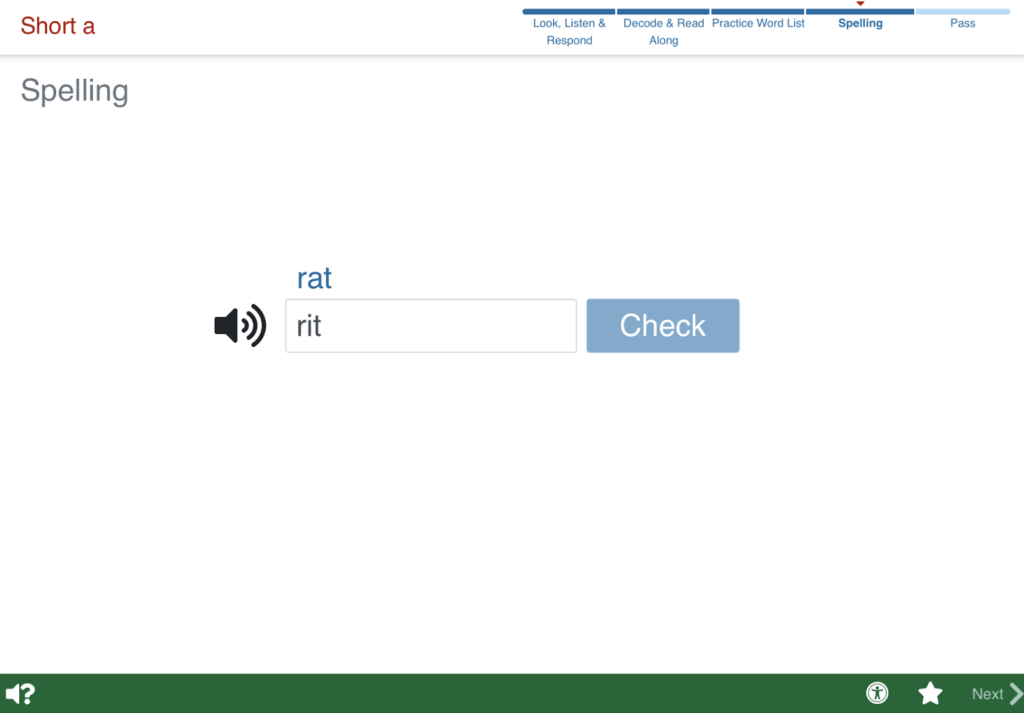Phonics.org takes a close look at literacy programs so that you can make informed educational support choices for the new reader in your life.
Continue reading to discover more about the Read Naturally Live literacy app.
What is Read Naturally?
Since 1991, Read Naturally (Read Live) has provided a range of interventions for literacy development. While Read Naturally has 12 different intervention options, this review focuses on three key components:
- Read Naturally Live
- Word Warm-ups Live
- One Minute Reader Live
Emphasizing research and assessment, the program offers technical and tailored support for students’ reading fluency and comprehension skills. Let’s take a look!
Usability of Read Naturally Live
When it comes to usability and interface, there are a few factors to point out in Read Naturally Live.
Sign-Up and Log In
Signing up for Read Naturally Live takes considerable time and effort. The process involves requesting a username and password, followed by a day-long wait for approval. The number of steps required—including inputting account numbers, user IDs, and passwords—exacerbates this difficulty, particularly for young children trying to navigate the system.
Navigation
Read Naturally Live has in-depth programming and navigation. While enrolling a student may be a relatively straightforward (although time-consuming) process, upon further exploration, the platform requires significant effort.
Users would benefit from watching instructional videos or participating in webinars, given the unintuitive nature of the interface. Educators must be prepared to invest substantial effort into learning the program.
Placement Test
The placement test in Read Naturally requires active involvement from teachers, as they must log in and be present to administer the assessment.
An Oral Reading Fluency (ORF) passage is used to place students. An ORF is a quick and highly accurate literacy assessment method that can be completed quickly. However, proficiency in administering this placement assessment requires specialized training for educators, adding complexity.
Following the assessment, the meticulous process of verifying the results involves using the program’s dedicated calculator, charts, and methodology. While this is a thorough method, the detailed nature of the post-test procedures can be time-consuming and tedious.
Data Management and Student Growth
Read Naturally tracks student progress. Detailed charts provide comprehensive insights into individual student performance. Through these tools, educators can gain a nuanced understanding of each student’s development, enabling targeted interventions and adjustments to support their learning journey.
Engagement in Read Naturally
These factors contribute to the overall engagement of children learning with Read Naturally.
Neutral Appearance
The program’s neutral aesthetic makes it suitable for older learners requiring intervention. However, this lack of visual stimulation may contribute to a sense of monotony. It’s devoid of engaging characters, vibrant colors, or interactive elements typically found in engaging educational apps for young children.
Instead, Read Naturally leans towards a “skill and drill” practice, prioritizing content over flashy presentation. This makes it more appealing to some older students.

Activity Length
Some activities within Read Naturally can become lengthy and monotonous, lacking clear indications of when they will end. This ambiguity can lead to uncertainty and a sense of disengagement for students.
Rewards
While the program offers incentives like earning stars, points, or awards for completion, these rewards lack tangible significance. The advantage of this approach is that the focus stays on learning skills and intrinsic motivation (improving based on personal skill). Users would be encouraged to improve their reading skills tangibly with detailed and immediate feedback on progress.

Literacy Instruction in Read Naturally: Live
How is the Read Naturally Live program for literacy? When it comes to phonics and literacy skills, we’ve made some observations.
Scope and Sequence
Read Naturally has a carefully designed scope and sequence for foundational literacy skills. The program begins with practice reading one-syllable words, focusing on practice for each vowel sound, which is a tricky skill for new readers to learn.
The curriculum assumes students enter with some confidence in this skill, using the app as a platform for practice and reinforcement rather than initial instruction. This approach ensures a targeted and efficient progression, maximizing student engagement and skill acquisition.
Type of Phonics
Read Naturally Live uses synthetic phonics as its primary approach to phonics instruction. Synthetic phonics connects individual sounds and letters to teach children how to read and spell words. It’s known as the most effective, efficient method of phonics instruction.
Read Naturally Live uses a direct and explicit teaching approach to teach phonics concepts, which is ideal. While the instructional videos aren’t exciting, they’re clear and short which is a good approach for new readers.
Phonemic Awareness
Read Live Naturally incorporates phonemic awareness practice into its lessons. The practice of manipulating phonemes is done with and without letters. Students observe how to blend individual letter sounds together to read a word. This is done through ‘final blending’ (saying each sound and putting them together at the end).
The program can improve here by showing other types of blending such as continuous blending—where each sound is held and blended into the next sound without pauses in between.
Overall, the Read Naturally Live program presents many opportunities for reading practice and modeling, reinforcing effective phonics and phonemic awareness concepts.
Letter Sounds
Read Naturally Live has relative accuracy in representing letter sounds in American English. The audio examples of phonics sounds serve as a valuable reference list, although certain phonemes like /r/ may require refinement.
It’s important to note that these audio cues serve primarily as reference points or reminders rather than comprehensive teaching tools. For optimal effectiveness, the program should coincide with direct classroom instruction of these key concepts.
Spelling
Read Naturally Live mirrors the reading instruction in its spelling lessons. The program models how to segment a word into its sound parts, and then reinforces vocabulary by using whole words in sentences. Students are expected to type the spelling responses on a standard keyboard which may present challenges for younger learners.
Alternative methods like using an alphabet arc or having a few letter choices could enhance the platform’s accessibility. Additionally, the program requires students to check their answers and correct their own mistakes. This method fosters independent learning and skill development.

Is Read Naturally Live a Good Reading Program?
Read Naturally Live offers a technical, skills-based approach to literacy development. It emphasizes interventions and tailored support for students’ reading, fluency, and vocabulary building.
While its neutral appearance and direct approach are appealing to older learners, it may lack engagement for younger audiences.
The program’s sign-up and navigation are challenging because they require substantial effort from users. However, its detailed data tracking and progress monitoring tools empower educators to make informed decisions. Despite some activities being lengthy, Read Naturally Live provides detailed feedback and opportunities for skill improvement.
With a carefully-designed scope and sequence, synthetic phonics instruction, and integration of phonemic awareness practice, the program effectively supports foundational literacy skills. Read Naturally Live can be a valuable resource when paired with direct classroom instruction and an involved teacher who is committed to using the program.
Want to find the best phonics programs available today? Read more of our reviews at phonics.org, rated by literacy experts and reading specialists.
Read Naturally Live: Overall Rating
Quality of Literacy Instruction: 3.5 / 5
Usability: 3 / 5
Engagement: 2 / 5

